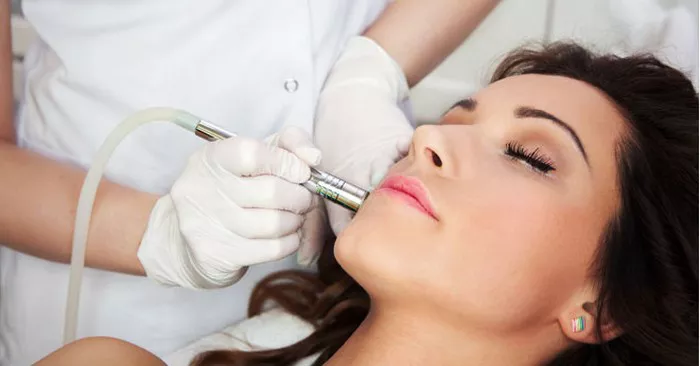Microdermabrasion has gained popularity as a non-invasive cosmetic procedure aimed at rejuvenating the skin’s appearance and texture. This exfoliation technique involves the removal of dead skin cells, promoting a fresh and revitalized complexion. A common question that arises among individuals considering microdermabrasion is: How long does a microdermabrasion treatment last? This article aims to provide a comprehensive understanding of the duration of the treatment, its benefits, the factors influencing its longevity, and tips for maintaining the results.
Understanding Microdermabrasion
Microdermabrasion is a minimally invasive cosmetic procedure that involves the mechanical exfoliation of the outermost layer of the skin. This procedure is commonly used to address a range of skin concerns, including fine lines, wrinkles, acne scars, uneven skin tone, and texture irregularities. During a microdermabrasion treatment, a handheld device with an abrasive surface is used to gently remove dead skin cells, revealing the smoother and healthier skin beneath.
Duration of a Microdermabrasion Treatment
The duration of a microdermabrasion treatment can vary based on several factors, including the area being treated, the depth of exfoliation required, and the specific technique employed by the skincare professional. Generally, a single microdermabrasion session can last anywhere from 20 to 30 minutes. However, for individuals seeking more intensive treatment or addressing multiple areas, the session duration might extend to 45 minutes.
Microdermabrasion Techniques
There are two main types of microdermabrasion techniques: crystal-based and diamond-tip.
Crystal-Based Microdermabrasion: In this method, fine crystals, often made of aluminum oxide or sodium bicarbonate, are sprayed onto the skin’s surface to exfoliate dead cells. A vacuum system then removes the crystals and dead skin cells. The duration of a crystal-based microdermabrasion treatment is influenced by the size of the treatment area and the depth of exfoliation needed.
Diamond-Tip Microdermabrasion: This technique involves the use of a handheld device with a diamond-tipped wand that is gently moved across the skin’s surface. The diamond-tipped wand exfoliates the skin while a vacuum system simultaneously removes the dead cells. The treatment duration depends on the same factors as crystal-based microdermabrasion.
Frequency of Microdermabrasion Sessions
The frequency of microdermabrasion sessions varies based on individual skin needs and treatment goals. For mild skin concerns and routine maintenance, a series of treatments spaced 2 to 4 weeks apart may be recommended. Those seeking more significant improvements may undergo sessions spaced 1 to 2 weeks apart. After achieving the desired results, maintenance treatments every 2 to 3 months can help sustain the benefits of microdermabrasion.
Benefits of Microdermabrasion
Microdermabrasion offers several benefits, including:
Exfoliation: Removal of dead skin cells enhances the skin’s texture and promotes a radiant complexion.
Stimulated Collagen Production: Microdermabrasion stimulates the skin’s natural collagen production, contributing to improved skin elasticity and firmness.
Reduction of Fine Lines and Wrinkles: The exfoliation process can diminish the appearance of fine lines and wrinkles, giving the skin a smoother appearance.
Reduced Appearance of Scarring: Microdermabrasion can help minimize the appearance of acne scars and other minor scars.
Enhanced Absorption of Skincare Products: With the outermost layer of skin removed, skincare products can penetrate more effectively, leading to improved results from topical treatments.
Factors Influencing Treatment Longevity
The longevity of microdermabrasion results is influenced by various factors:
Skincare Routine: Following a consistent skincare routine that includes proper cleansing, moisturizing, and sun protection can extend the duration of results.
Sun Protection: Protecting the skin from UV rays by using sunscreen and avoiding excessive sun exposure can prevent premature skin aging and help maintain the benefits of microdermabrasion.
Lifestyle Factors: Factors such as smoking, poor diet, and inadequate hydration can affect skin health and impact the longevity of results.
Genetics: Individual genetic factors play a role in how long the results of microdermabrasion last.
Maintaining Microdermabrasion Results
To prolong the benefits of microdermabrasion, consider the following tips:
Sunscreen: Apply a broad-spectrum sunscreen daily to shield the skin from harmful UV rays and prevent sun damage.
Hydration: Drink an adequate amount of water to keep the skin hydrated and maintain its suppleness.
Healthy Lifestyle: Adopt a healthy lifestyle by consuming a balanced diet rich in antioxidants and avoiding smoking and excessive alcohol consumption.
Professional Skincare: Continue to use high-quality skincare products recommended by skincare professionals to support skin health.
Regular Treatments: Schedule maintenance microdermabrasion sessions as advised by your skincare specialist.
Conclusion
Microdermabrasion is a popular cosmetic procedure that offers a non-invasive solution for achieving smoother, more radiant skin. While a single microdermabrasion treatment can be completed in 20 to 30 minutes, the frequency and consistency of treatments play a crucial role in maintaining optimal results. By understanding the factors that influence the longevity of treatment effects and adhering to a healthy skincare routine, individuals can enjoy the benefits of microdermabrasion for an extended period, revealing a refreshed and revitalized complexion that boosts confidence and self-esteem.

